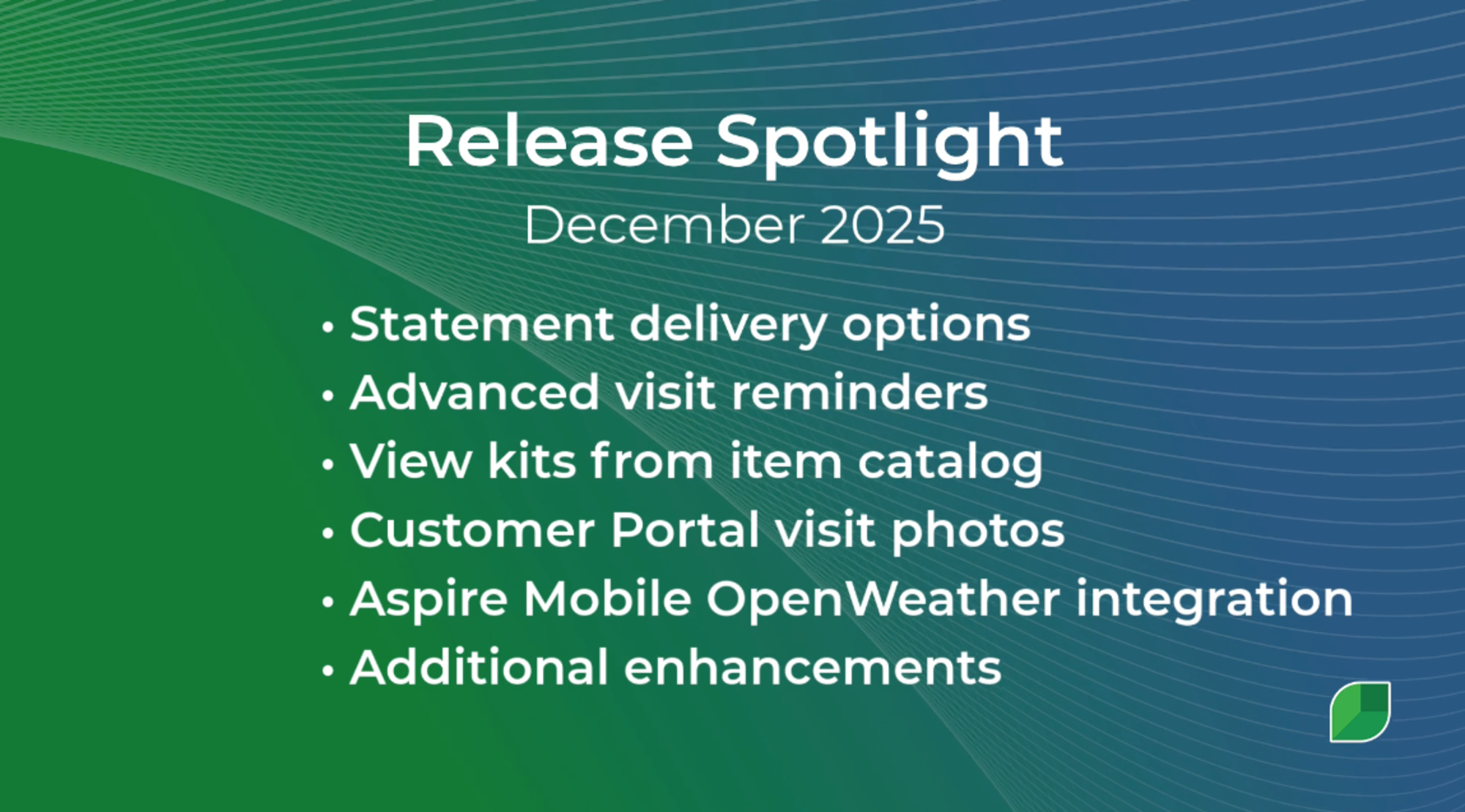Table of Contents
Any role at a high-growth company comes with challenges. The landscaping industry requires employees to adapt, respond quickly, and manage numerous responsibilities. If your company struggles with outdated information, double data entry, and a lack of insight into performance and profitability, it might be time to seek a business management solution.
However, a management solution is a company-wide investment rather than the kind of investment you can implement independently.
Here are some best practices for working with leadership to get buy-in for a management software solution.
Find a champion
The first step is to ensure you have support in your efforts. You don’t want to spend your time on a search that won’t have backing. Getting the green light before you begin finding the right solution will ensure you stay on the right track and have a focused game plan. To do that, you’ll need to find someone to champion your efforts and help you build a solid business case for the software you wish to implement.
A champion should be someone who:
Understands the challenges and needs of your role
Knows the values and mindsets of leadership
Has some authority with the decision-makers of your company
Can bridge the gap between leadership and crew members
Ultimately, it should be someone you trust and have a good rapport with.
Build a business case
The best way to give your project proper momentum is to build a business case for your potential software solution. A business case is a carefully constructed document detailing the value benefits behind the investment to convince a decision-maker to approve the recommended solution.
A business case aims to illustrate the value of an investment to a business and help reduce concern over any risks or potential challenges. A professional business case also demonstrates your effort in your search. It assists with garnering buy-in from leadership, translating your needs into value they understand, and tying your desired solution to major company strategies.
Your business case needs to cover these core aspects of the investment:
Value to the business
This needs to cover efficiency improvements, time-saving benefits, cost savings, new business capabilities, and visibility into operations. Tie these value points back to the business's key goals and growing pains.
Value to business roles
Displaying the weight behind your urgency about a new solution is vital to the success of your business case. As a valued team member in your position, you have a unique viewpoint that leadership doesn’t get to experience daily. You need to illustrate the struggles of your role, the benefits to the business if you could do more with your position, and how a potential software could amplify the capabilities of your part and everyone with similar responsibilities.
Scalability
An investment of this stature needs to benefit a company’s ability to achieve a new scale. Scalability is vital to long-term success; the more your solution can help long-term, the more decision-makers will be willing to buy in. Consider reviewing automation, templatizing features, analytics, and anything that enhances a company’s ability to standardize performance.
Company culture benefits
Every business cares about keeping their teams connected and the organization collaborative. Review key investment areas that improve the company's connectivity, communication, and cohesion.
Understanding leadership’s goals
To guide your business case, you need information that will stand out to your local decision-making team. To do that, you need a clear understanding of the short-term and long-term goals of the business. Each leader has individual goals they strategize around to help the company achieve its grander vision, so you need to explore each department's current wants and pains.
Your leadership team generally consists of decision-makers responsible for:
Operations
Finances
People
Customer experience
Sales
Company growth
You should identify the key stakeholders in charge of the strategies for navigating these goals. If you have the opportunity, reach out, or consider sitting in on a meeting, getting to know the current strategies, and gathering an understanding of the challenges impeding them. If accessing time with the leaders themselves, consider finding co-workers within the department who are clear on the current goals and daily operations.
Compare solutions
You want to come to your leadership team with options and extensive research on all of them. There are plenty of options out there, and getting lost in the crowd can be easy.
Start by being specific about the options you explore. Based on your research, the software you seek out must aim to achieve specific goals and benefits. Focus on these core aspects of your ideal software and explore solutions with excellent reviews in those capabilities.
Then be specific with how you present your options. Be thorough, but keep the information straightforward so leadership doesn’t get overwhelmed. This means not sifting through website links or ads you pulled off YouTube.
Use sites like Software Advice, Capterra, SourceForge, and GetApp to compare different software. These comparison sights will even break down key features and help you quickly distill what a solution is or isn’t capable of.
Pull from reviews and testimonials, preferably ones that speak directly to the functionality or goals you’re seeking to achieve.
Compile customer stories or case studies that align with your business’s pains and goals.
Once you have the range of solutions you’d like to present, organize the data and info before you submit and begin to pick your top runners.
Report your findings
Presentation is key. You need to keep it concise, precise, and human. Your efforts might derail if your information is scattered, doesn’t flow well, or is just a robotic influx of information.
Work with your champion to organize your findings. Ask them for opinions on your notes, if they consider specific insights valid or unnecessary, and get suggestions on what might be missing.
Compare your presentation to other company presentations. Check if the sales team has any decks or templates they use. This will help you keep your formatting and style clean while reflecting company values.
Pinpoint a cadence and flow to your information. If you start speaking to company pain points, stick to that focus and don’t jump back to it later in the presentation at random. Cover all relevant subjects in a way that builds on the value you’re presenting. Highlight pain points, then work up to the solutions to those challenges, expand on how those solutions provide benefits throughout the company, and build up to bigger goals of the company.
Get the conversation started
Ensure you’re not wasting time and effort on a fruitless search. Get the conversation going with leadership. Put out a feeler, check if they’ve explored similar options, and what stopped them in the past. Make sure they’re open to the vision before you spend time vetting solutions.
As a management software with a decade of experience in this industry, Aspire understands the challenges of starting the conversation.
So let us be your first champion. We offer resources to help you get started on your search for the right software platform for your business, such as:
After you’ve showcased how a business management solution will transform your business, take the next step with a personalized demo of Aspire.






